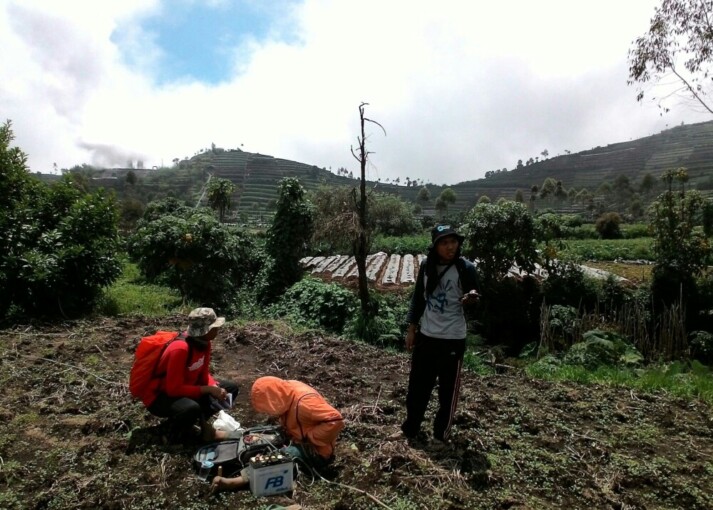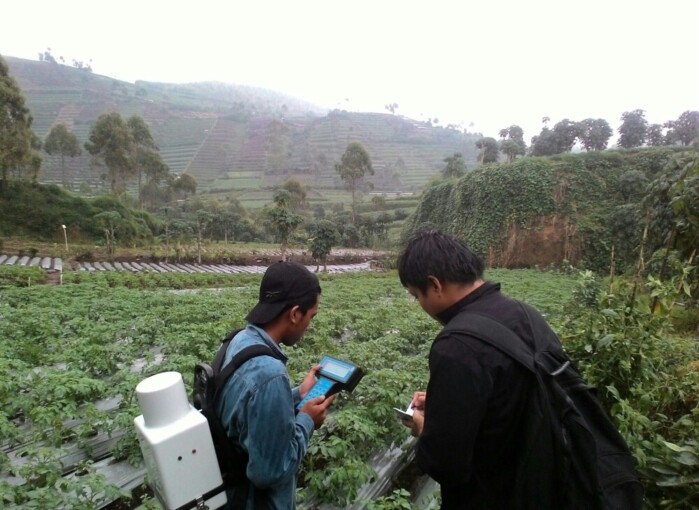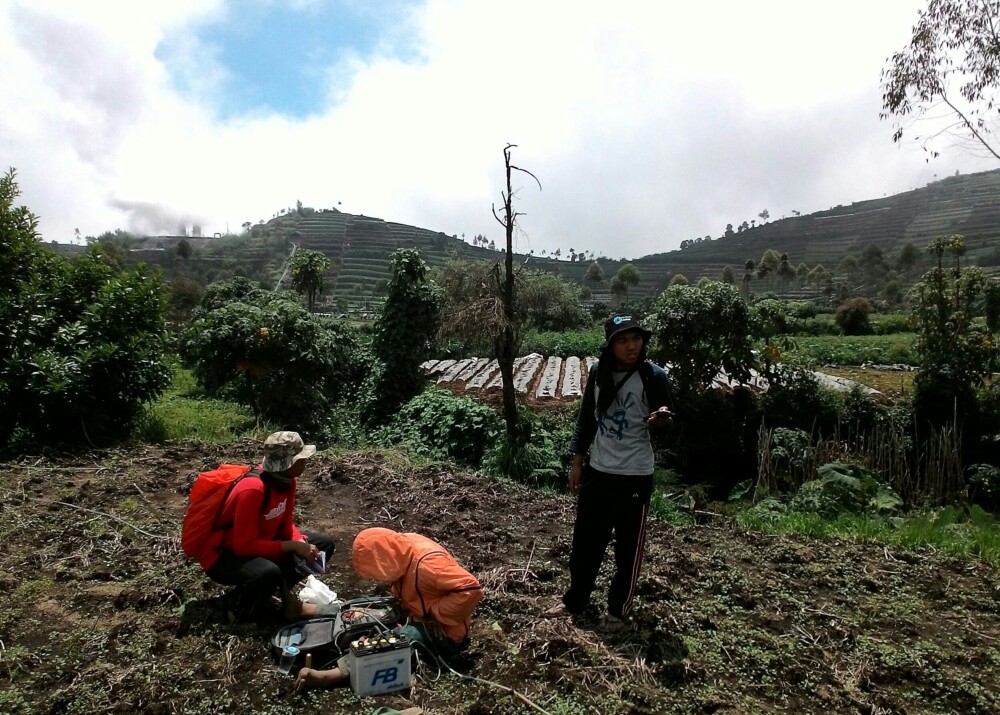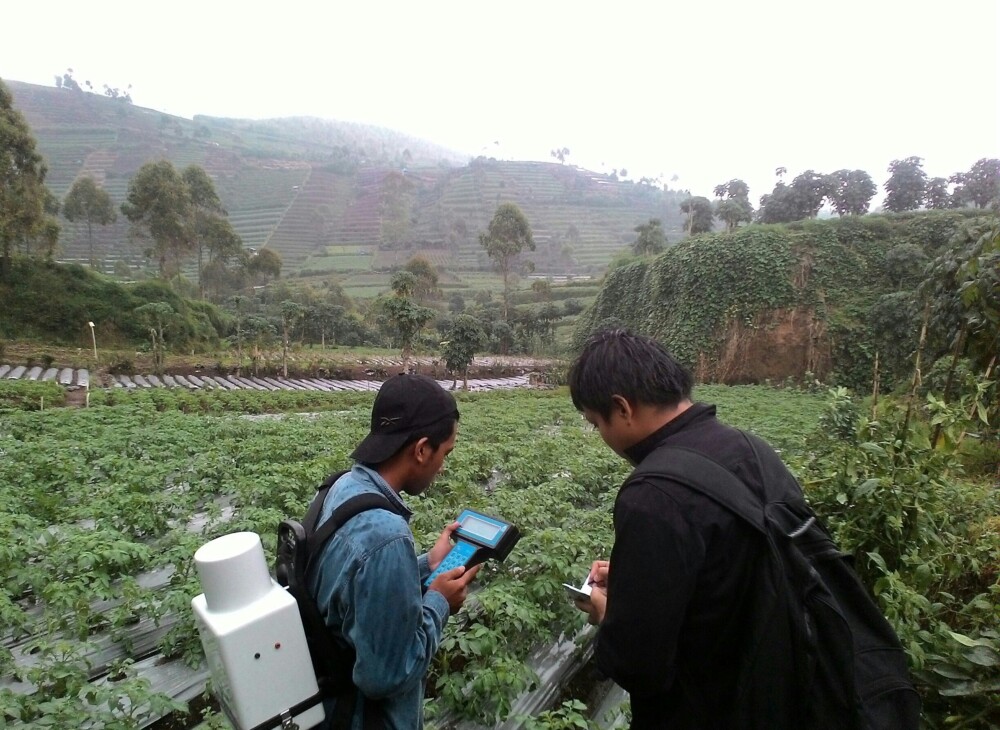The residents of Pawuhan hamlet in Karangtengah village, Banjarnegara regency in Central Java still have limited access to clean water. Despite availability of water in the ground, it cannot be consumed as it gets polluted.
Students of Geophysics study programme at Universitas Gadjah Mada were intrigued to find out more about the pollution. They are Afdhal, Nanang Suwandana, Diva Alfiansyah, Muchammad Reza Aditya, and Abdul Rozak who joined the Student Creativity Programme of UGM under the guidance of lecturer, Drs. Imam Suyanto, M.Si.
“The cause of the pollution is unknown scientifically, but according to the residents, this happened after geothermal wells were excavated east-south of Pawuhan hamlet,” said he on Monday (1/8) at Faculty of Maths and Natural Sciences UGM.
This has obviously made it difficult for the residents, moreover that they work as farmers there that need plenty of water. So, to get water, they have to explore the water resource from Gunung Prau area and distribute it to their hamlet using hose.
Diva mentioned that this problem is interesting to be further investigated as the water that is polluted is mostly found in the waste polluted area or factory waste polluted area that are usually in the lowland. Interestingly, the problem affecting Pawuhan happened on the 2000 – 2100 meters above sea surface.
“The pollution here did not change the colour of the water, but the taste became salty,” she said.
These students did a mapping of the polluted water in the area to know the limits where there is pollution or is not. This is done using geophysics methods, which are geoelectric and electromagnetic. Geoelectric method is a geophysics method using the principle of electric current to know the underground structure.
The results showed a difference in chemical contents and direct resistivity value of the polluted and non-polluted water. The resistivity value of the polluted water ranges between 12,60 – 31,62 ohm.m, while the RAE value that is proportional with conductivity ranges between 0 – 9.
These can be made the basis for the border of areas that are polluted. The residents are, therefore, asked not to consume the water from the polluted areas.
“On the other hand, the geothermal project managers are expected to minimise the waste of the geothermal well production by recycling as well as using and making effectve catchment,” they said.





